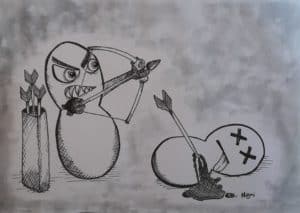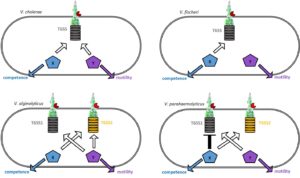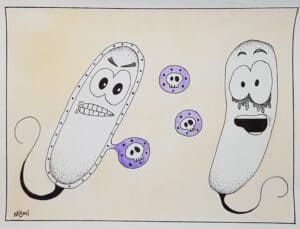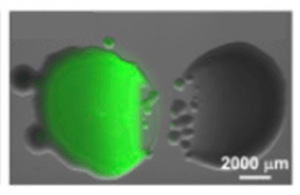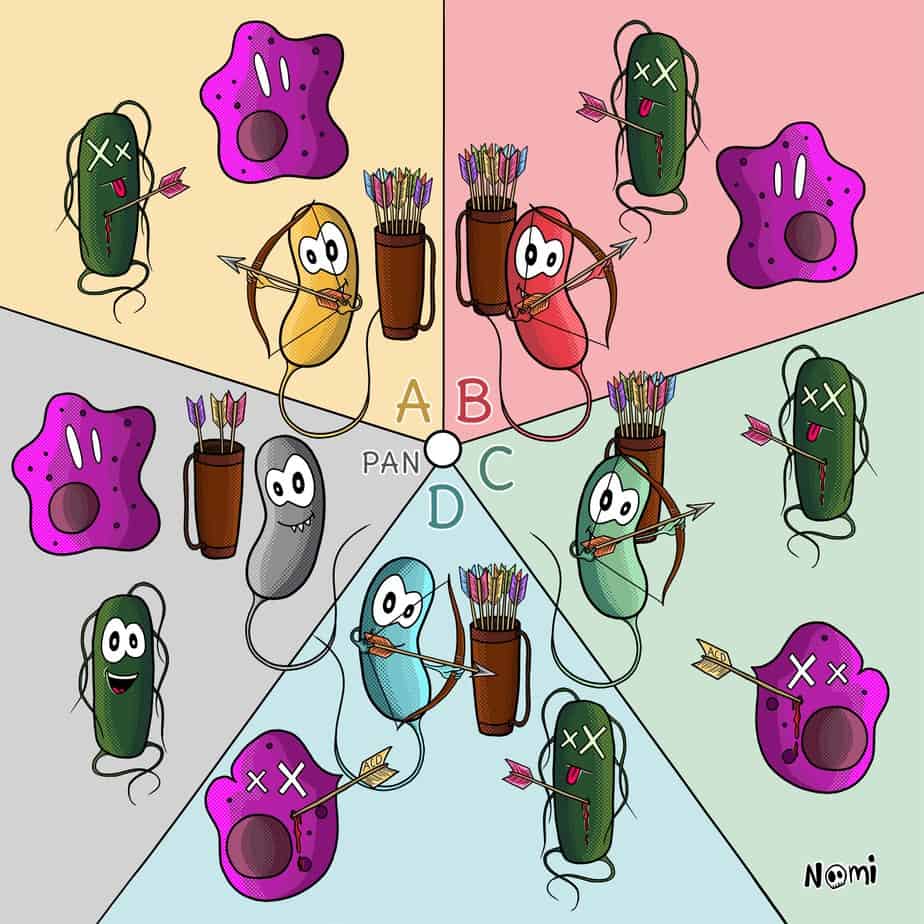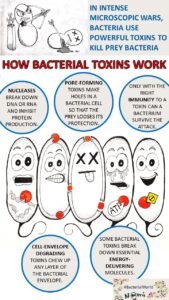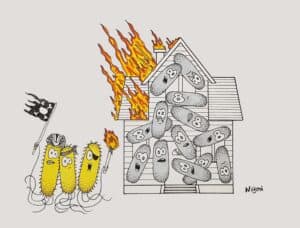Antibiotics – we use them to kill harmful bacteria or fungi when we’re sick. Yet, antibiotics are actually produced by bacteria and fungi in the first place.
But what do bacteria and fungi use antibiotics for? Why do they produce them? And what are the advantages of microbes having antibiotics as molecular weapons?
What are antibiotics?
The father of antibiotics, Selman Waksman, first used the word antibiotics for any small molecule made by a microbe that can inhibit the growth of other microbes.
So, microbes – especially bacteria and fungi – use antibiotics to kill other microbes. These other microbes can be bacteria, fungi or bigger organisms. Not viruses though!!!
Because antibiotics bind and inhibit cellular machines in living organisms. These molecules often bind to so-called targets. Antibiotic targets can be proteins or enzymes that make for example the cell wall, other proteins or components of the respiration complex.
These proteins are generally essential. So, when antibiotics inhibit the proteins, the cells are missing these essential functions. And without them, they cannot survive and die.
Hence, like other bacterial toxins, antibiotics are lethal.
Interestingly though, bacteria and fungi make antibiotics from simple building blocks. These are present in every cell and can be amino acids, lipids or even sugars.
But instead of using these building blocks for their normal functions, microbes link them together in different ways. With this, they create new – and fancier – molecules that barely resemble the original blocks.
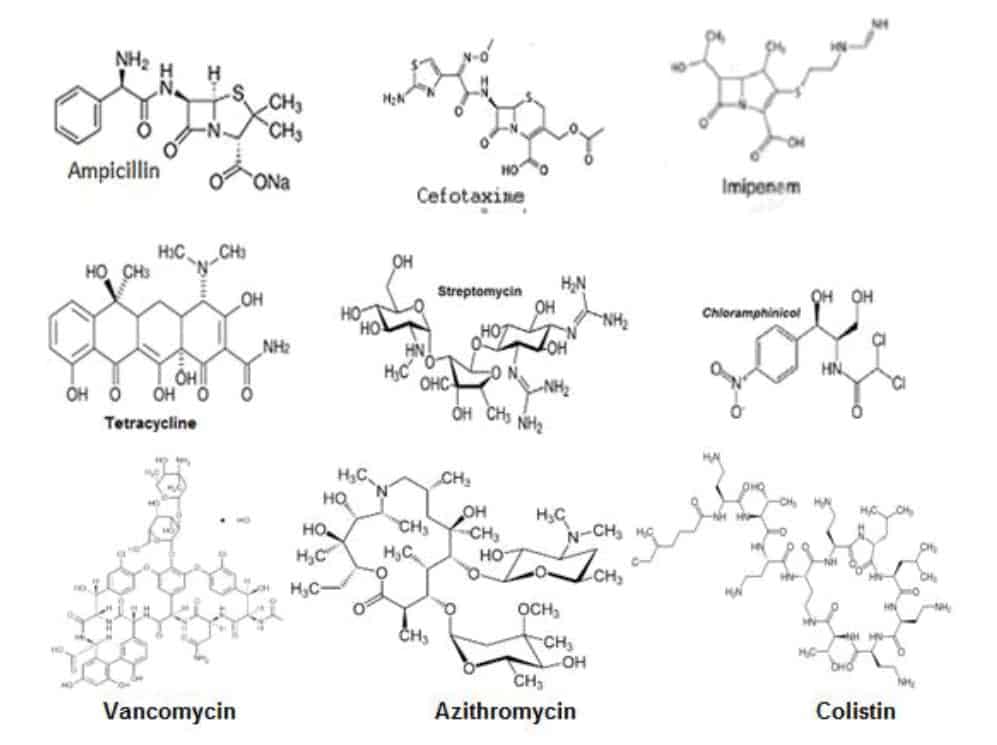
Then, they transport these antibiotics to the outside or send them off in outer membrane vesicles. When the antibiotic hits another microbe, there are two possibilities: either the microbe is resistant to the activity of the antibiotic or it dies from it.
But what about the microbe that produces the antibiotic? Is it resistant to the antibiotic itself?
Why are microbes that produce antibiotics not get killed?
Since antibiotics are meant to KILL other microbes, then why do producing microbes not get killed by their own antibiotics? The answer is self-protection!
Whenever bacteria or fungi produce antibiotics, they always also produce some sort of self-protective means. Just as when bacteria produce other toxins, they always need to make sure they are not killed by their own weapons.
These self-protectors usually keep the antibiotic in an inactive state. For example, they completely surround the antibiotic molecule so that it cannot bind to its usual target within the cell. Another strategy is to add a small molecule to the antibiotic – again to keep it from binding to its target.
Then, when the microbe is ready to transport the antibiotic outside of the cell, it takes the self-protection off the antibiotic. This releases only the toxic part – the antibiotic itself – into the surrounding.
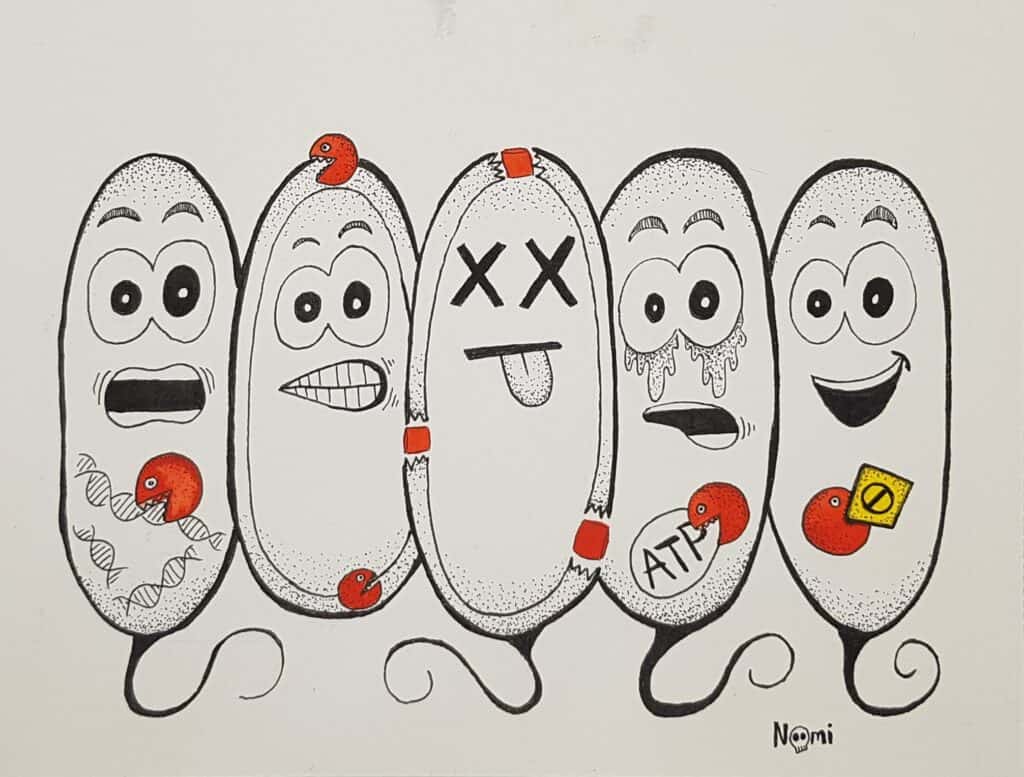
Note, however, that these self-protection mechanisms are not antibiotic resistance mechanisms. Self-protection mechanisms are meant to inactive antibiotics only temporarily. Hence, these mechanisms are reversible. The antibiotic can still become active and thus toxic.
Resistance mechanisms, on the other hand, are meant to inactive antibiotics permanently. Hence, these mechanisms are irreversible. Since this usually completely destroys the antibiotic, it cannot become active anymore.
But what triggers microbes and especially bacteria to produce antibiotics? How do antibiotics help the producing cell in their daily circumstances?
Why do bacteria produce antibiotics?
To answer this question, we need to look at where the bacteria live that make antibiotics. And two-thirds of the known antibiotics are made by bacteria from the Actinobacteria family. Within this family, Streptomyces is the best-known member that produces half of all known antibiotics.
Another example is bacteria from the Myxococcus family. So, where do Streptomyces and Myxococcus bacteria live? Interestingly, these bacteria call the soil their home.
And in the soil, they often confront lots of friends and foes. And they need to constantly fight for their own survival.
Myxococcus is known as a wolf-pack predator because it kills its prey in massive attacks. Colonies of Myxococcous roll over their prey, secrete antibiotics and thus kill them and feed on them.
Streptomyces, on the other hand, uses its antibiotics a bit more civil.
To move in the environment, Streptomyces bacteria grow as long filaments throughout the soil. They build long chains and branch out into the soil as multicellular organisms. These branches are filled with Streptomyces cells but also spores so that the bacteria can extend to new places.
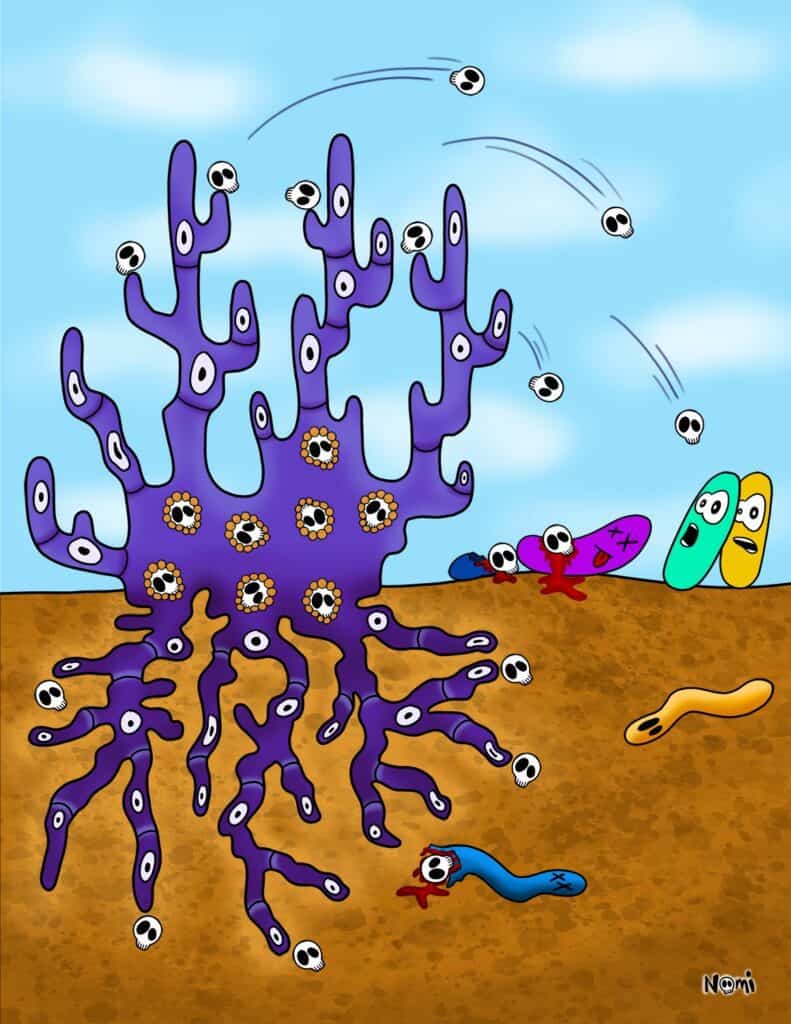
When the bacteria hit a period of bad weather or don’t find much food, they release their spores as a survival strategy. Plus, they start releasing nutrients for the spores. But these nutrients also attract other organisms like bacteria.
Hence, at the same time, Streptomyces produces a huge amount of antibiotics to fend off these putative food-stealers. Like this, Streptomyces makes sure their spores are safe and can survive in their new homes for a while.
How do antibiotics produced by bacteria help others?
Like Streptomyces, lots of bacteria use antibiotics to fight off predators. This assures their own survival and that of their species.
Yet, more and more research finds that bacteria not only kill other species with antibiotics so they can survive. The killing also benefits their hosts.
For example, the bacterium Janthinobacterium lividum lives on frogs where it produces the antibiotic violacein. This antibiotic kills fungi so that the bacterium protects the frog from deadly fungal infections.
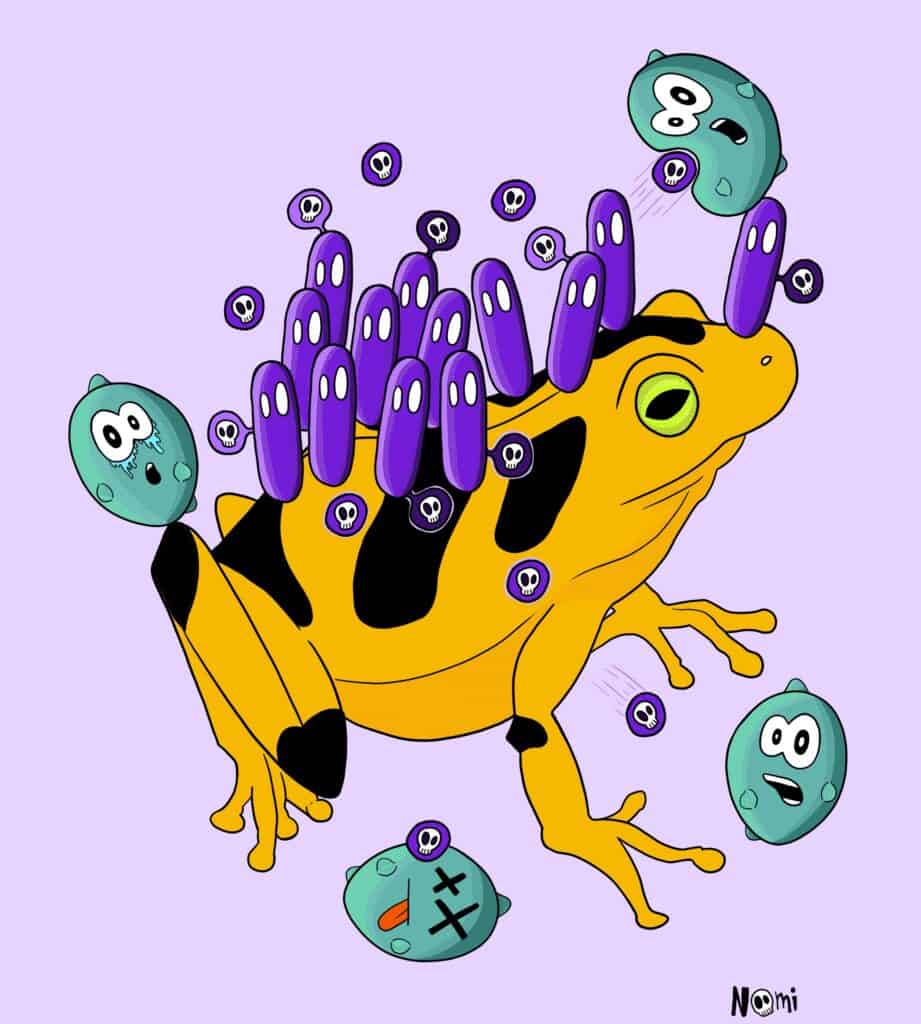
Also, a bacterium that lives in our noses is the harmless Staphylococcus lugdunensis. This bacterium produces the antibiotic lugdunin. That inhibits the harmful Staphylococcus aureus from settling down in our noses. Now, scientists look into how we could use the harmless Staphylococcus lugdunensis to protect us from infections.
Another example of microbes that produce antibiotics to help others is the three-member association of ants, Streptomyces and a fungus. Several species of ants grow fungi for food. They feed their fungi with fresh plants and let them grow in special underground gardens.
To not contaminate these fungal gardens, ants carry symbiotic Streptomyces that produce antibiotics. Like this, the antibiotics kill other microbes and keep the fungal gardens free of harmful intruders. As a thank you, the ants feed the Streptomyces and give them a place to live.
About antibiotic-producing microbes
So, just as we use antibiotics to kill harmful bacteria and fungi, antibiotic-producing microbes do the same. They want to fight off predators and assure their own survival.
When you think about it: we use their own killer weapons against them. Poor microbes!

